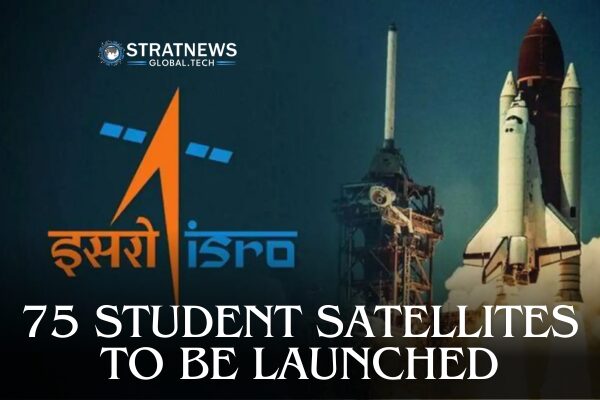India Celebrates Engineers’ Day with 75 Student Satellites
As India marks Engineers’ Day on September 15, 2025, honouring the 164th birth anniversary of visionary engineer Sir Mokshagundam Visvesvaraya, the nation finds itself at a critical juncture in its space journey.
In a tribute to both engineering excellence and youthful ambition, Indian Space Research Organisation (ISRO) is preparing to launch 75 satellites—each one designed and built by students from across the country. This unprecedented initiative not only celebrates India’s 75 years of independence but also showcases the ingenuity of its next generation. And, also proving that the future of space exploration is not just in the hands of scientists, but also in the classrooms, labs, and imaginations of young Indian engineers.
A Landmark Student Satellite Mission
The 75 Student Satellites Mission, one of the most groundbreaking educational space programs ever attempted, is being carried out by ISRO in collaboration with the Indian Technology Congress Association. Conceived as a tribute to 75 years of India’s independence, the project allows engineering students across the country to design, fabricate, and test nanosatellites under the guidance of veteran space scientists such as Dr. Mayilsamy Annadurai. Each of these satellites, weighing between 3 and 12 kilograms, carries not only scientific payloads but also the aspirations of a new generation determined to carve its place in India’s space journey.
Students engaged in this mission are working on advanced concepts like Internet of Things applications, inter-satellite communication, earth observation, and low-earth communication systems. With ISRO providing access to critical space-grade materials, testing facilities, and free launches aboard the reliable PSLV, the initiative ensures that learning transcends textbooks and classrooms, offering hands-on experience in every aspect of space engineering.
Engineering Excellence Driving India’s Space Future
For the young engineers involved, building and operating these satellites is not just a technical exercise but a transformative journey that builds skills in design, testing, project management, and mission operations.
The timing of this mission could not be more symbolic. Engineers’ Day 2025 is being celebrated under the theme “Deep Tech & Engineering Excellence: Driving India’s Techade,” perfectly reflecting the direction in which India’s space economy is moving.
Currently valued at $8–9 billion, the sector is projected to expand to $44 billion in the coming decade, creating opportunities for engineers in areas ranging from satellite technology and propulsion systems to data science, space law, robotics, and even space tourism. What was once the exclusive domain of aerospace engineers has now grown into an interdisciplinary arena where software developers, material scientists, AI specialists, and policy experts all find a place.
India’s student satellite programs, beginning with early projects like ANUSAT in 2009, have now evolved into a nationwide ecosystem of innovation. From IIT Kanpur’s JUGNU to SRM University’s SRMSAT and the multi-institutional STUDSAT, these missions have laid the groundwork for what is now an unprecedented surge in student participation.
Today, universities not only build satellites but also set up their own ground stations, track data, and apply space technologies to real-world challenges such as agriculture monitoring, disaster management, and communication. This marks a shift in Indian engineering education, one that prizes practical learning as much as theoretical knowledge.
ISRO has further amplified this movement with initiatives like YUVIKA, a program for school students, and START, an online training platform for undergraduates and postgraduates. Together with internships at ISRO centres, these opportunities ensure that the pipeline of space talent remains strong and diverse. The vision is clear: to create a generation of engineers who are not only employable in India’s booming private space sector, led by companies like Skyroot Aerospace, Agnikul Cosmos, Pixxel, and Dhruva Space, but who can also take the country toward ambitious missions like Gaganyaan, Chandrayaan-4, and the establishment of an Indian space station by 2030.
Continuing the Legacy of Sir M. Visvesvaraya
All of this progress resonates deeply with the legacy of Sir M. Visvesvaraya, whose philosophy of “Work is worship” continues to guide Indian engineering. His life’s work, building the Krishna Raja Sagara Dam, transforming irrigation systems, and championing technical education, was rooted in the belief that engineering must serve society. Today, the students building satellites in his honour are applying the same philosophy in orbit, designing technologies that can help farmers, protect the environment, and improve communication systems on Earth. Just as Visvesvaraya’s innovations redefined India’s infrastructure, their contributions will shape the nation’s spacefaring future.
As the 75 student satellites prepare for launch, they represent more than just hardware circling the Earth. They are symbols of collaboration, innovation, and resilience, carrying forward the dreams of thousands of young engineers who will define the next chapter of India’s space journey.
On Engineers’ Day 2025, as the country pays tribute to a legendary engineer, it also celebrates the engineers of tomorrow, the students whose satellites will soon dot the skies, proving that the spirit of innovation is alive, unstoppable, and destined to reach beyond the stars.


